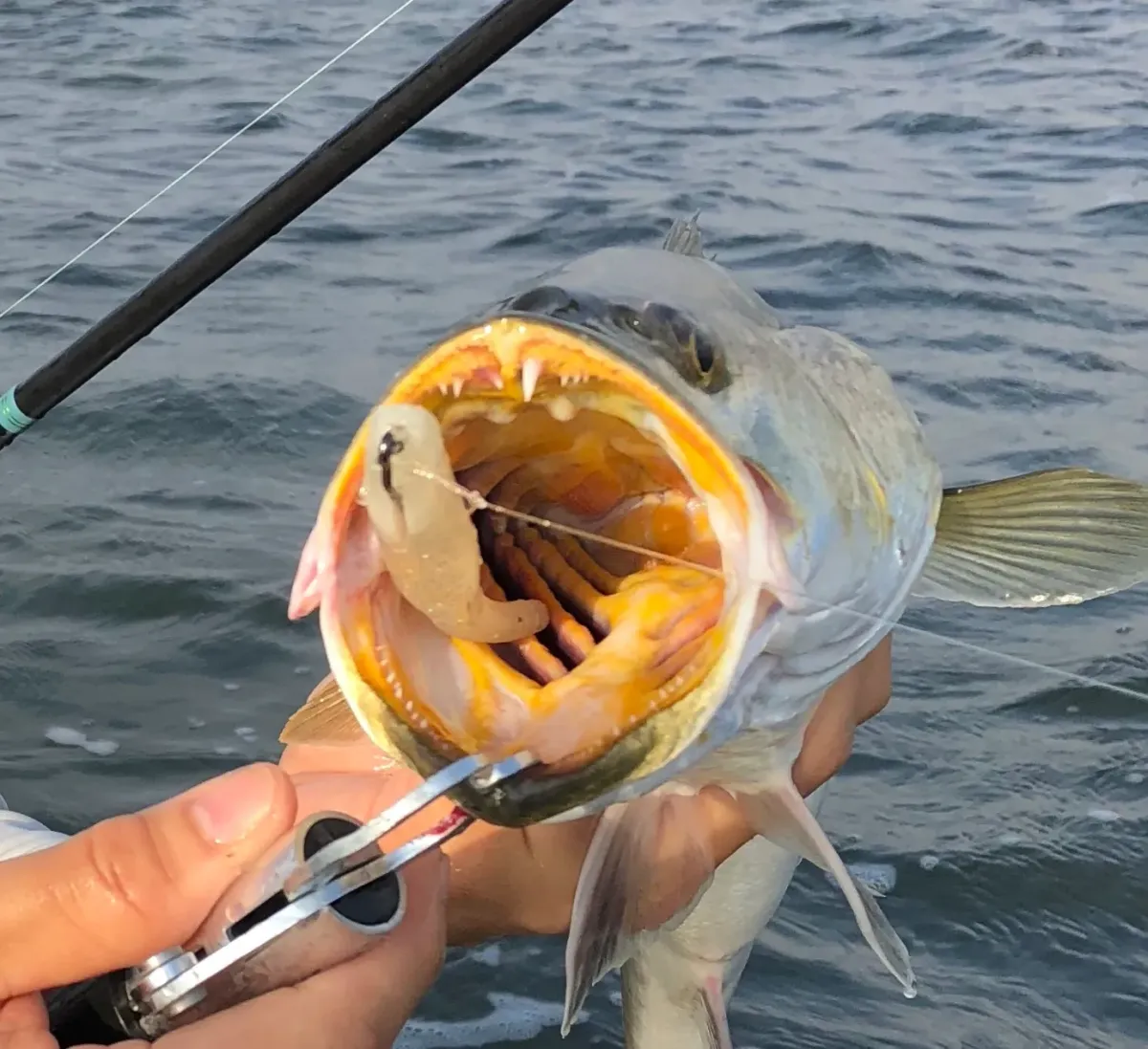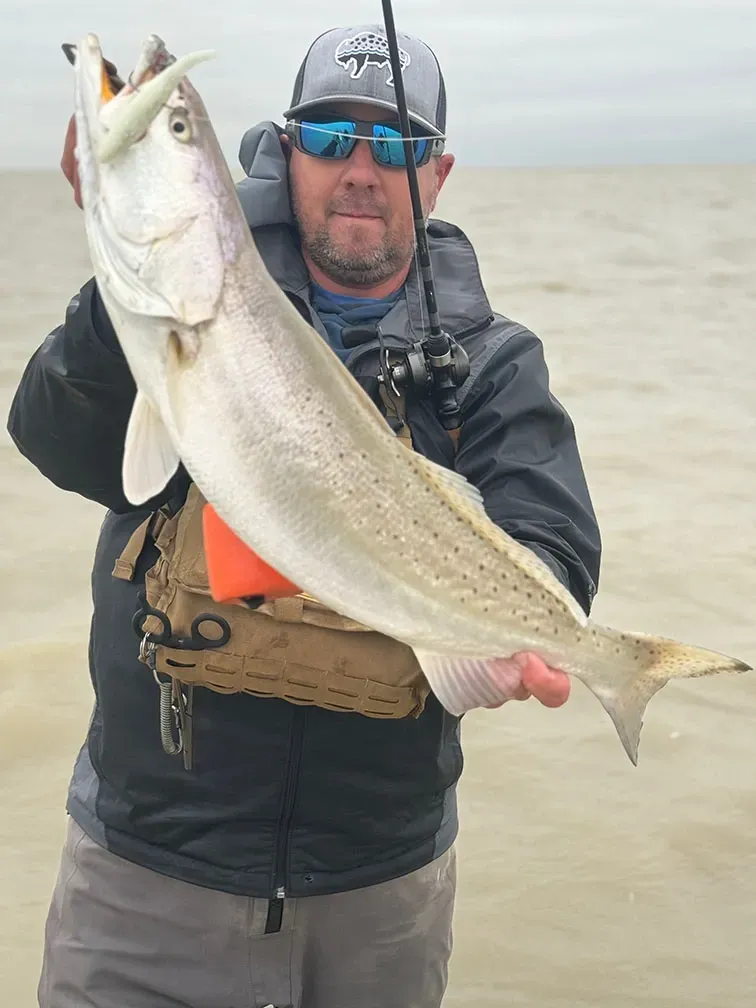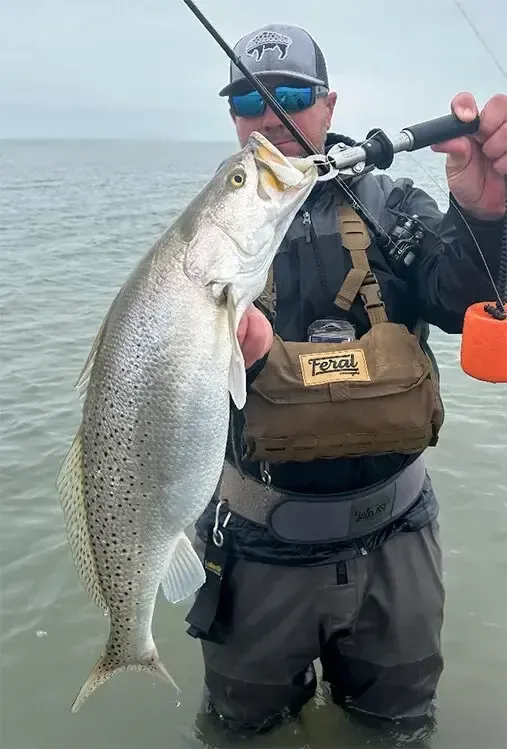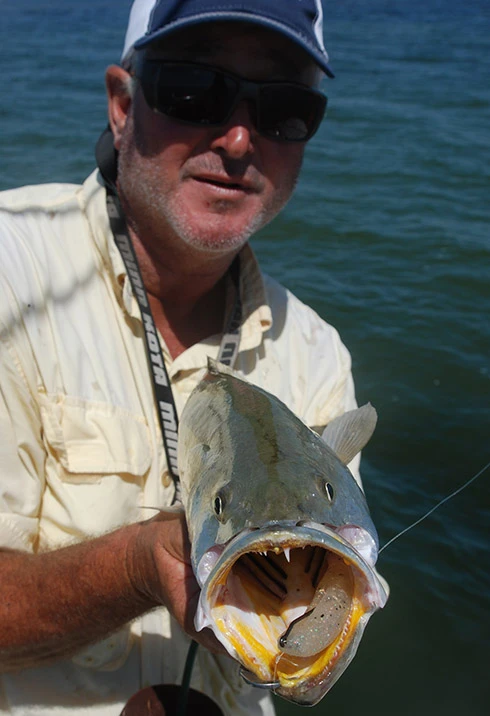
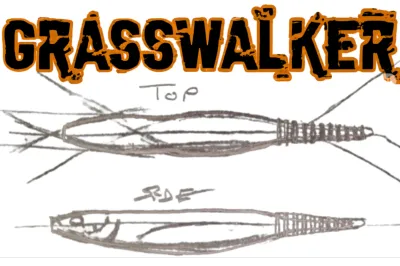










TroutSupport GrassWalker
$5.49
Color
Quantity
Trout Support Lure 5 Pack
7 years in development. I scrapped the design twice and started over fresh when it wasn’t doing what I thought it should for you.
Going through nearly a 1000 modifications and adjustments all to make a lure that was new with great action, long casting, and slow sinking and one that solves the problems we have fishing shallow environments with seagrass, marshgrass, oyster, rocks, mangroves, and even docks.
It out-casts and out-fishes the competition in tough conditions where you need it to perform, where others won’t, whether that is floating seagrass and high wind, fishing tight to big rocks, or skipping it into tight, heavy cover.
I say it’s part 4×4, part B-1 Bomber, part Ranger, and part Seal Team all packed into one lure!
Additional information
- US Patent – D 474,782 S’
- Weight - Cast like 1/4oz. with weightless hook. Slow Sink.
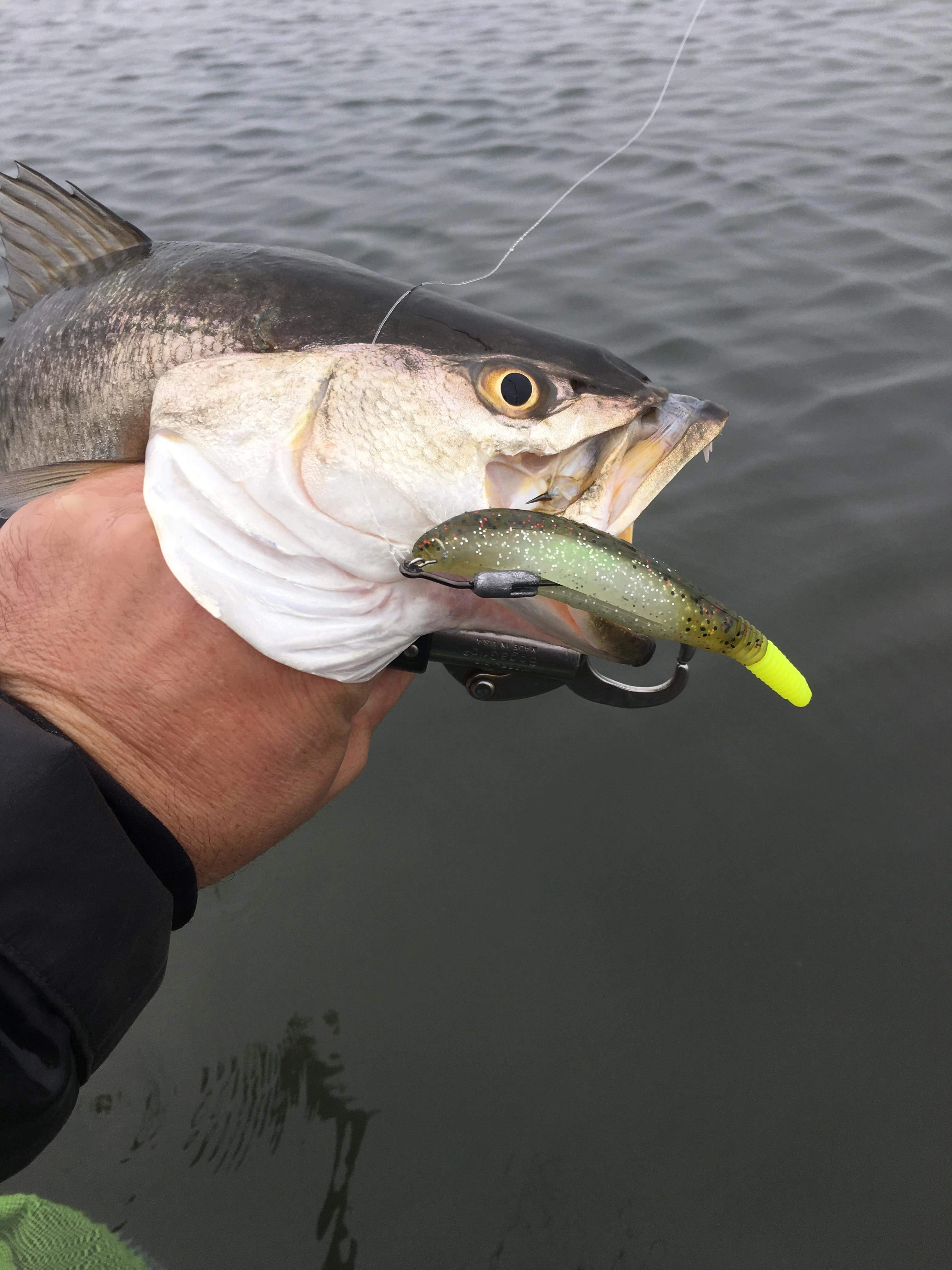
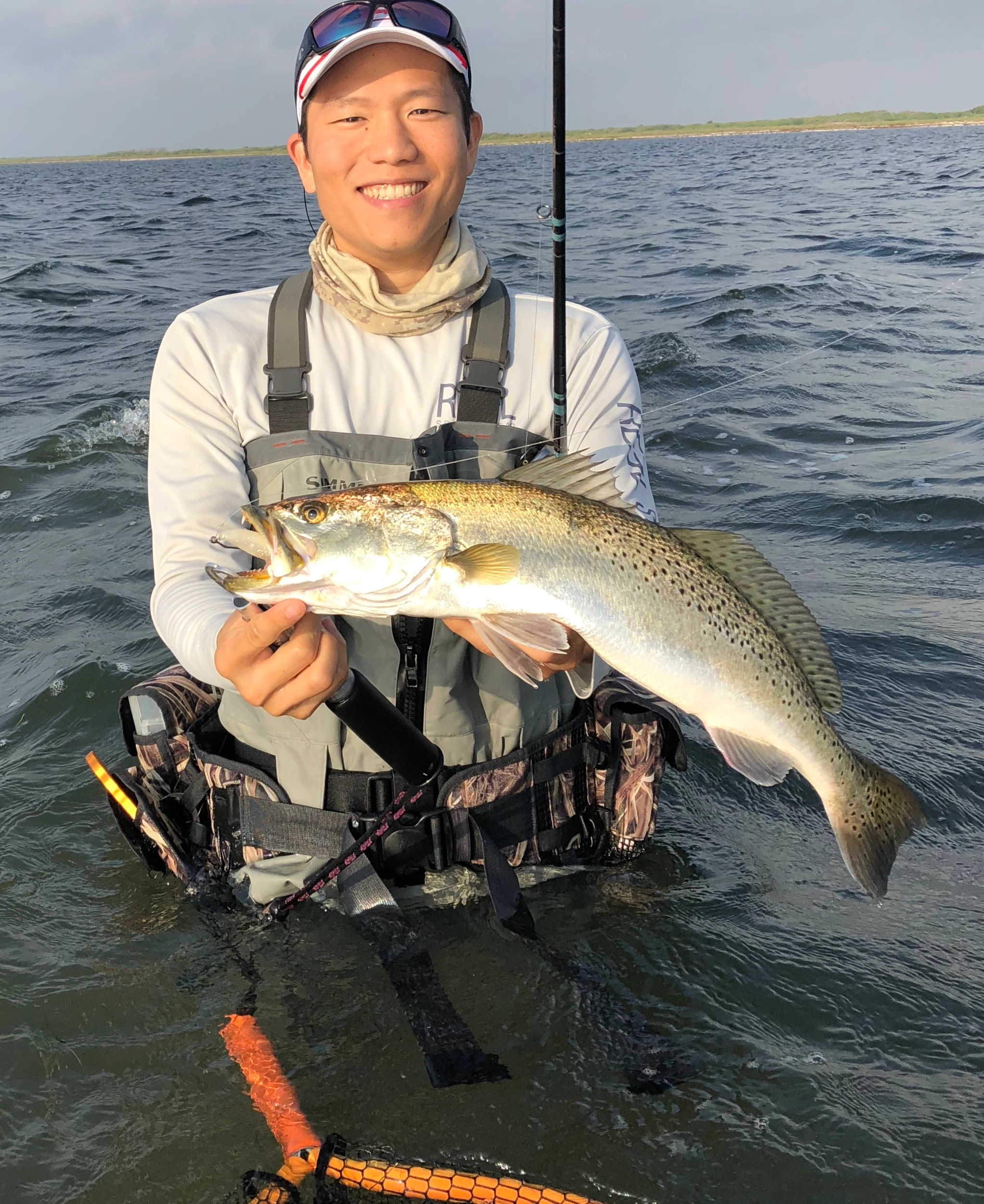
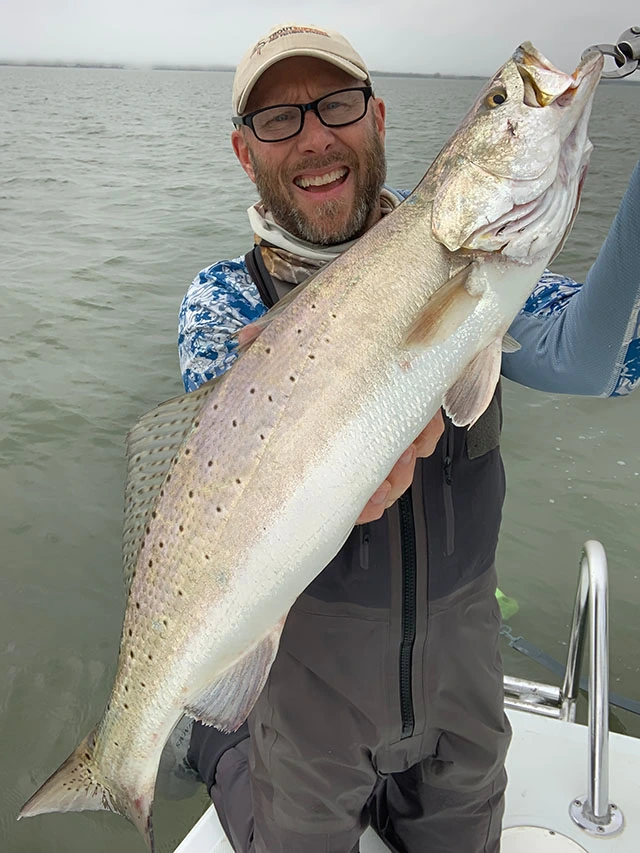
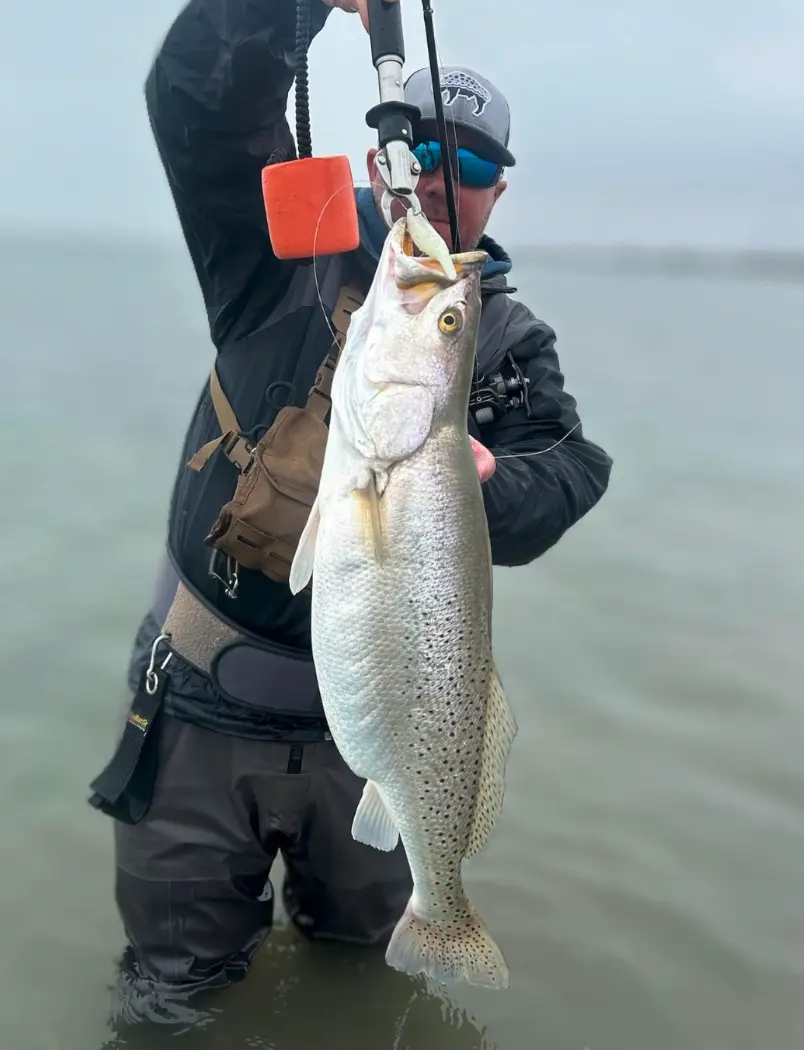
The lure is a slow sink, walk the dog, soft plastic. It is not a topwater. It works under the surface and this is easier for a fish to eat anyway. There is no wrong way to fish it.. walk it, fish it like a worm, or slow reel it.
The lure with an unweighted hook weighs 1/4oz.
Cast as well as a spook jr. without a weighted hook.
Cast well into wind without the weight.
List of Retailers Carrying them:
Corpus Christi - Fishermans Place
Harlingen - Hook Line and Sinker
Katy - Anglers Anonymous
Rockport - Tackle Town
Corpus Christi - Roys' Bait & Tackle
Richmond - Hoss Archery
Corpus Christi - Anglers Depot
Victoria Tx - Waterloo Rod Shop
Recommended Hooks:
BKK Titan Rider 5/0 and Gamakatsu EWG Monster
For Tournaments use the offset shank Nemesis or Similar in 5/0.
Alternative rigging for Surf, Open Water, or No Floating Grass present - Rig it with a No. 4 or No. 6 stinger treble attached to the weedless hook. I need to create the fotos for this alternative
Just like many of us had to learn new fishing methods when Paul Brown lures came onto the scene, getting the best hook up ratio with weedless rigged baits also takes learning something new. If we treat them like treble hooked lures, or exposed hooks like jigheads that won't work for a weedless rig very well. They are different and require different hook setting methods to achieve best results. There are some lures in this category that even with the below recommendations will not achieve decent hook up ratios, but the below will certainly help all weedless rig hook up effectiveness.
In fishing for inshore species, we tend to use light to medium action rods with little backbone. That does not help hook up ratio with weedless rigged lures of any brand. But I think some compensations in other areas can make up for the rod; there's no need to buy another rod.
First, I think it is important to note what happens in a fishes mouth when they eat a lure that is rigged weedless. Just like a live baitfish they can quickly move this bait to the back of their mouths where they have pads of teeth referred to as crushers. These teeth are used for holding prey and moving it in the gullet. They can hold tight enough that weak hook sets will not move the bait enough to move it to the lip or jaw region. The hook set has to deliver enough energy to move the bait out of the pads of teeth in the back of the mouth.
Secondly, use braided line because it has little to no stretch. Monofilament has way too much stretch to get a good hook set here. A monofilament main line, in this instance, would take all the energy in the hook set and just abosrb it; We have to MOVE the bait. I do recommend using a Fluoro or Mono leader tied to the main line via your choice of line to leader knot.
Tighten your drag down to where only the largest trout or red could pull line off the reel. This is done to reduce slippage so we can move the bait in the fishes mouth upon hookset. If drag is loose, the line slips on the hookset and doesn't move the bait to the lips. The drag should be able to be pulled out but only for a big red or trout.. I can barely pull mine out by hand (take care not to cut your hand with small braid diameters).
Upon getting a strike from a predator, stealthily, without the fish noticing, point the rod toward the fish and take up line without putting pressure on the fish. Just a couple cranks of the reel; this doesn't have to be perfect, the intent is to prepare for the hook set by starting with the rod lower and with less line 'out'.
Now set the hook hard like you would a bass. Cross them eyeballs. Since we are using kahle style Extra Wide Gap hooks like the afforementioned brands and models we can rely on the hook setting mostly into the jaw and lips, through bone and cartilage. J hooks like jigheads tend to set in the thin skin like a top of mouth.. the hooks we recommend lend toward setting in firm hook holding areas. So set the hook hard starting with rod pointing to the fish make a quick hard hook setting upward move of the rod.
If you find the fish are dropping the bait when reeling the line to take out slack, then you are putting too much pressure trying to reel too fast or taking up line faster than moving the rod toward the fish... be stealthy; it's a quick precise action. Point rod at fish, reel 2 cranks, then set the hook hard.
Immediately after setting the hook, reduce your drag a couple of turns and then adjust as needed to finish out the fight of the fish. You still need to allow the drag to work on upper slot reds and trout over 25 inches. They can bust tackle and line.. I've not had any problems by doing this immediately after the hookset.
Finally, after releasing your fish, straighten the bait and retighten your drag prior to the next cast.
A note about strikes. All sizes of fish like to bite on this lure; From pin and piggy perch (aka turd tappers), needle gar, all the way to oversized reds and trophy trout. Many of the bites that you feel and do not connect on are actually just the little stuff pecking at it. Needle gar will bite the bait and swim with it and leave teeth marks. Perch will nibble the shit out of it.. undersized trout and sand trout do have trouble getting it in their mouths, but honestly, who wants to catch a dink anyway? And every time a keeper trout, red, or flounder eats it they will be there when you set the hook with power. Yeah sometimes even I use a puss hookset when I'm not ready and that results in a poor hook up even with jig heads and trebble hooked lures. Set the Hook!
US Patent – D 474,782 S’
Designed to Alleviate Anglers Frustrations with floating SeaGrass, Shallow Oysters, and Rocks with Barnacles, SkippIt All Species. Patent - D474,782 S

What Anglers Say About Our Grasswalker
Discover how the Grasswalker™ slips through seagrass, glides past oyster and rocks, and gets strikes where other lures can’t.
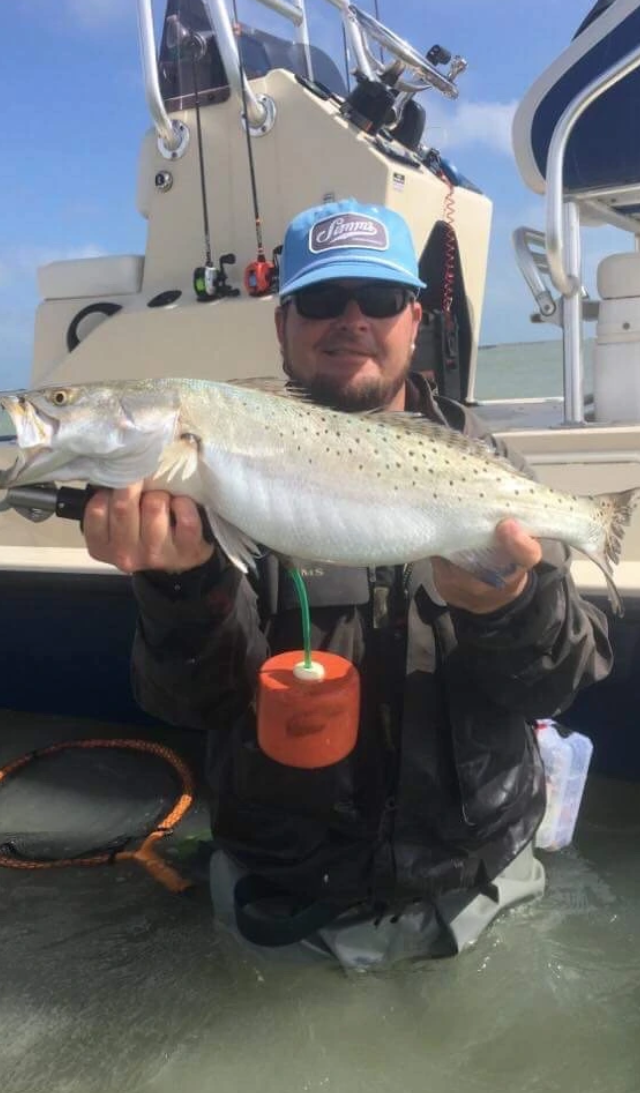
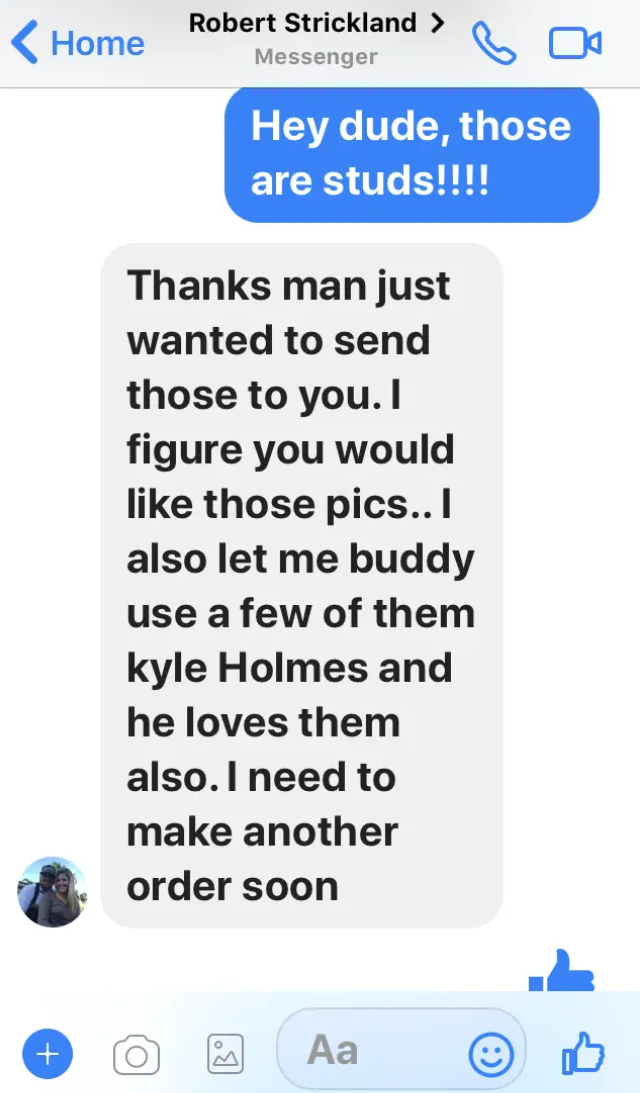
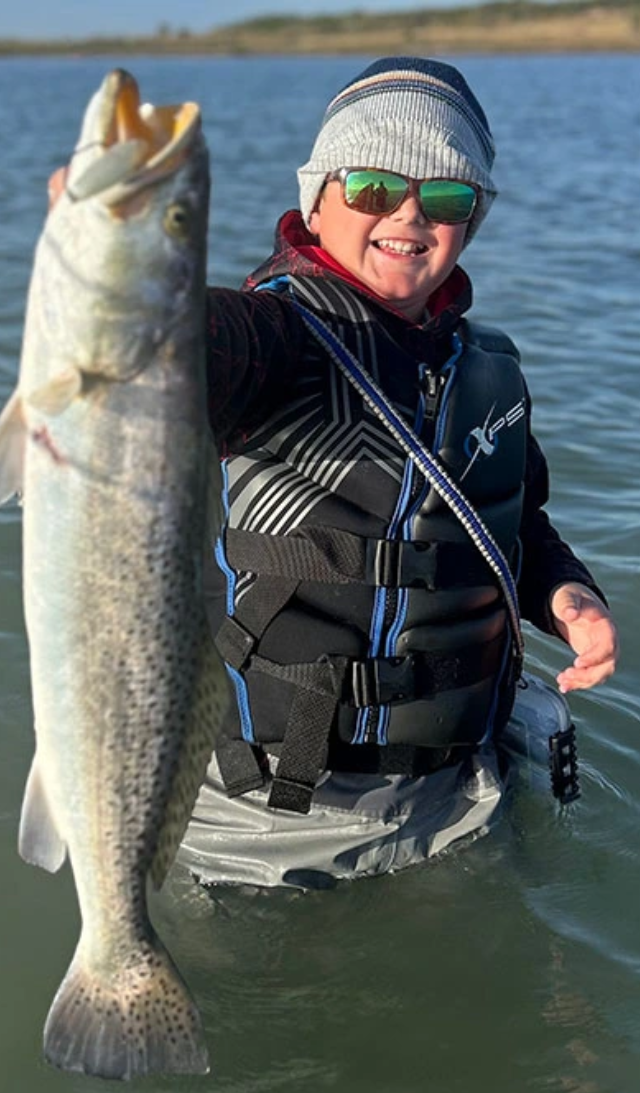
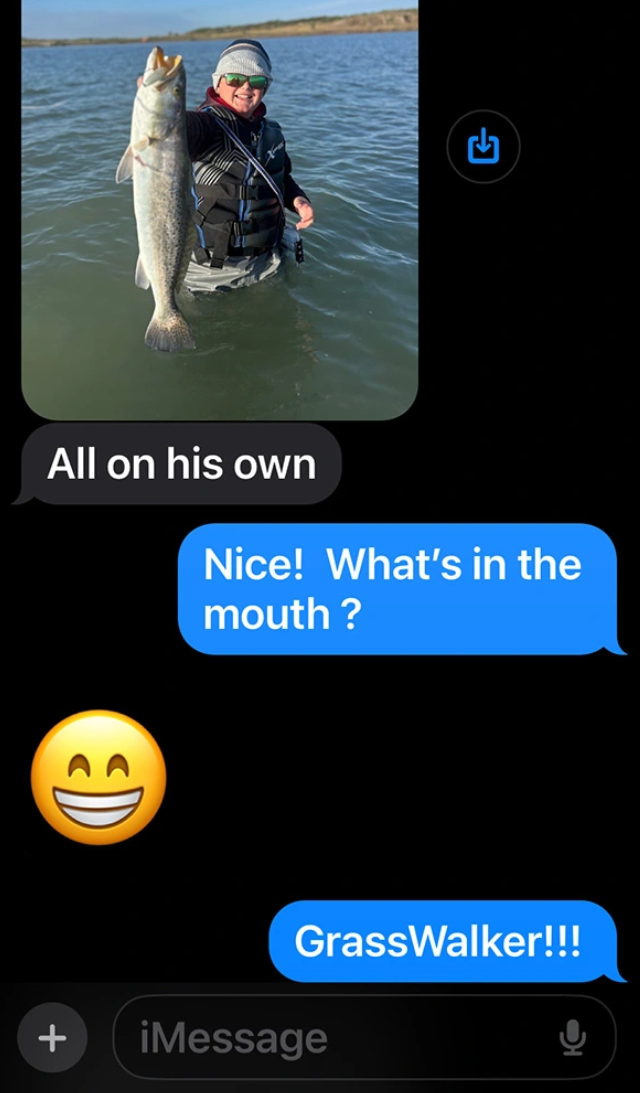
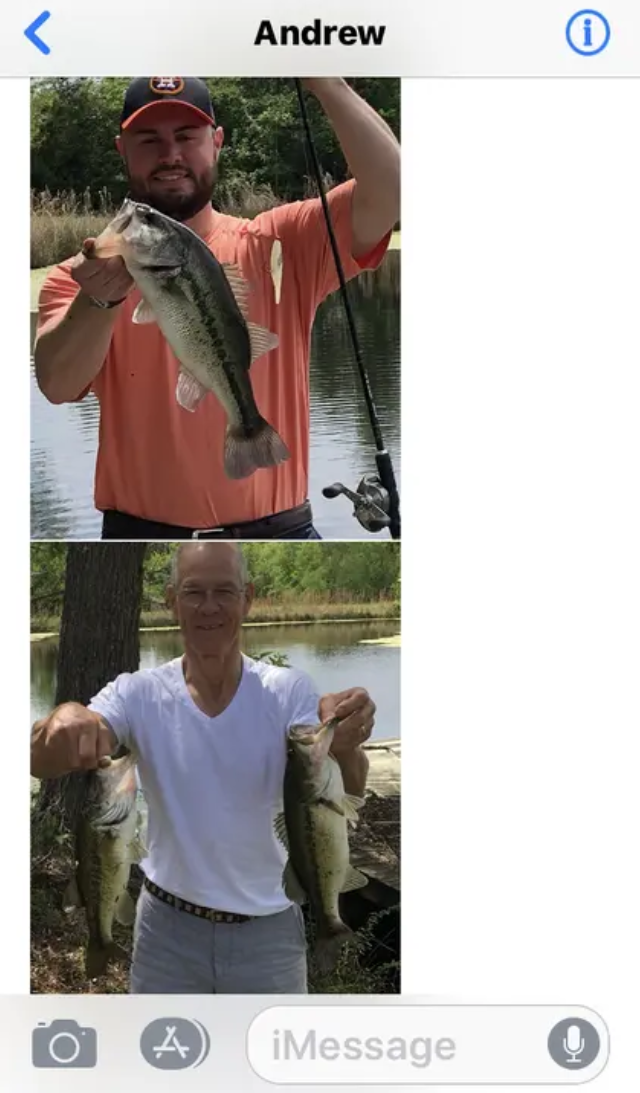
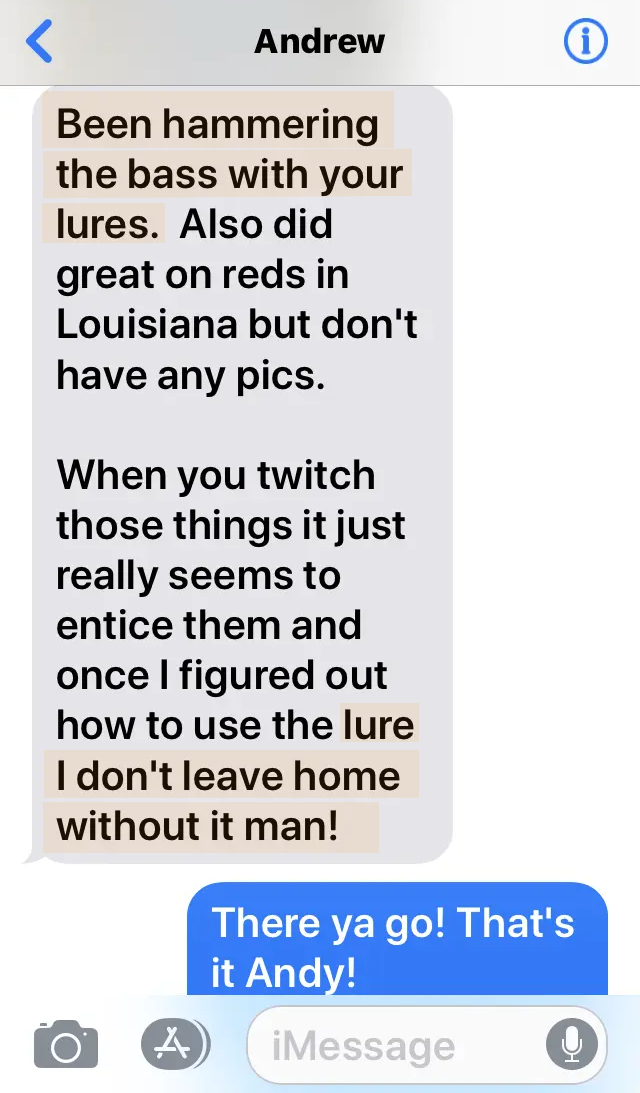
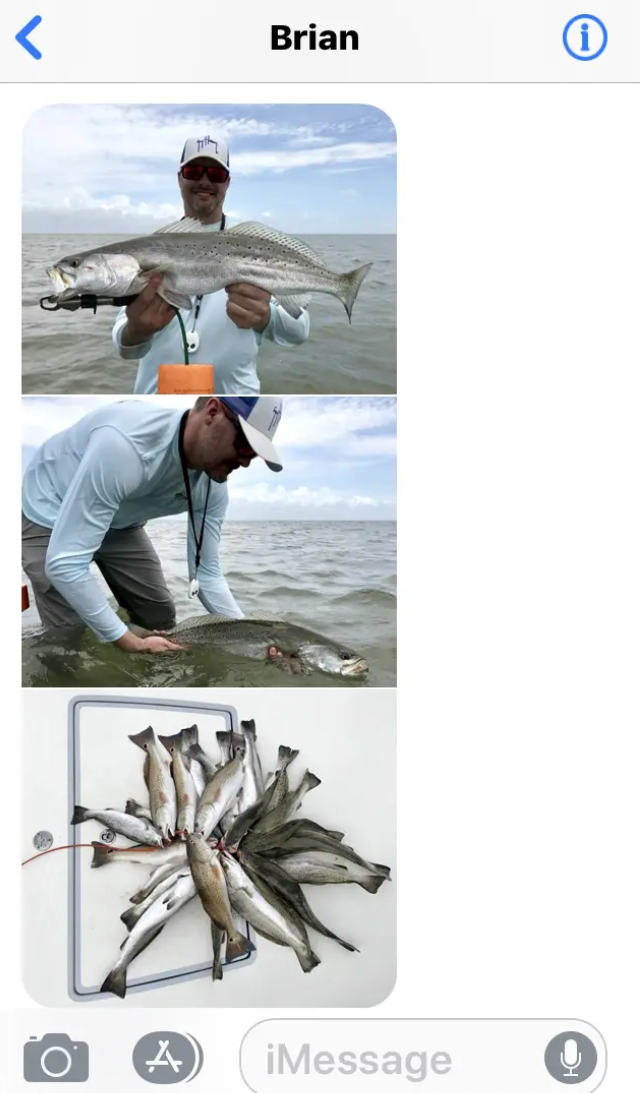
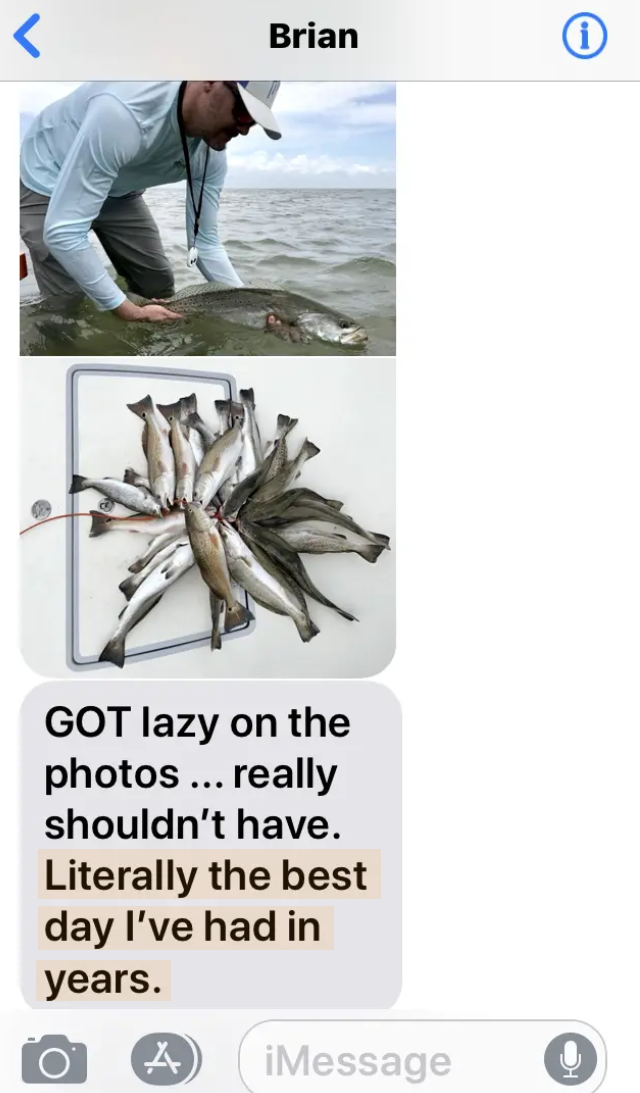
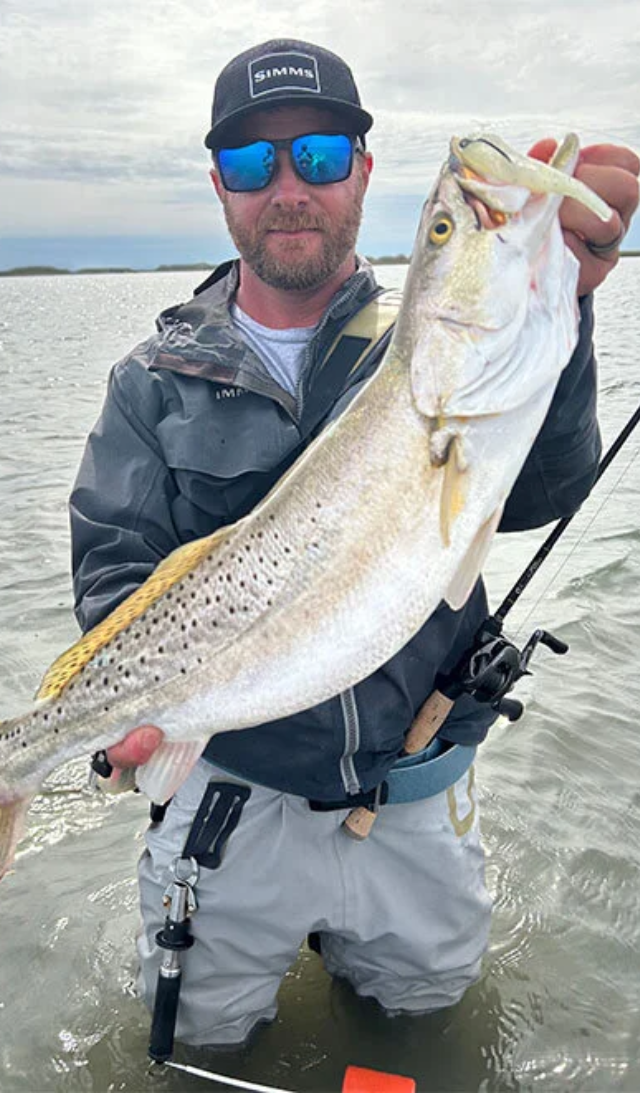
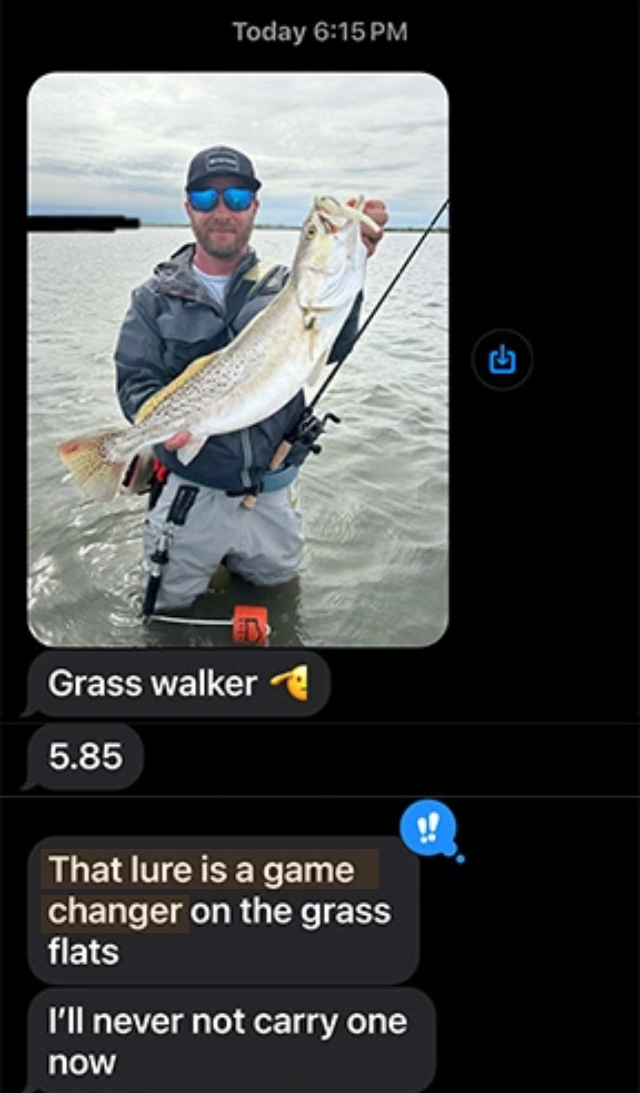
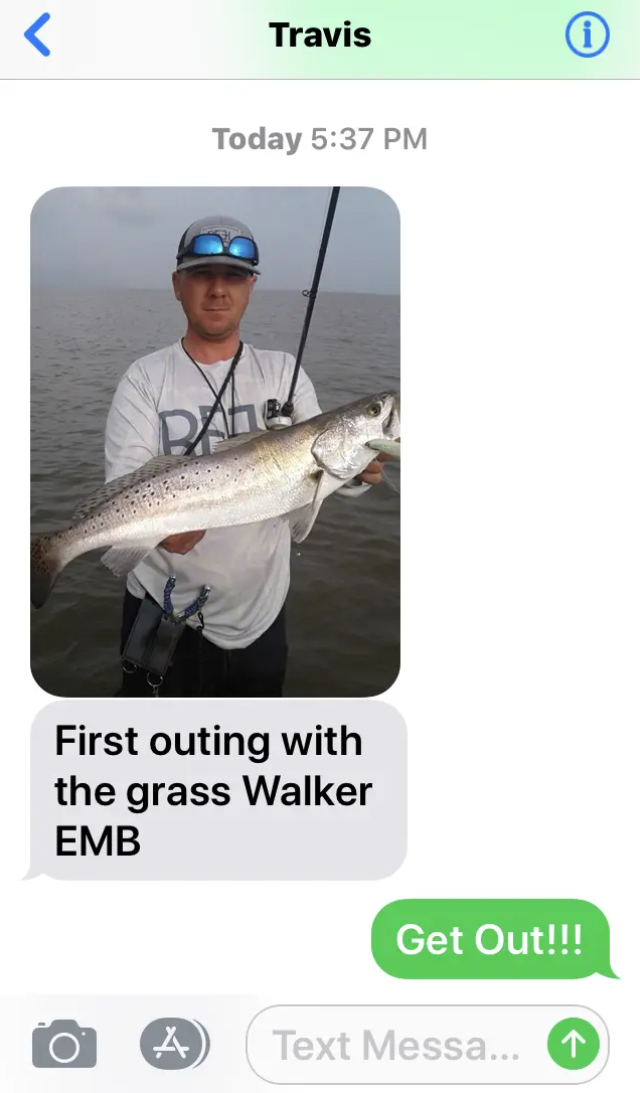
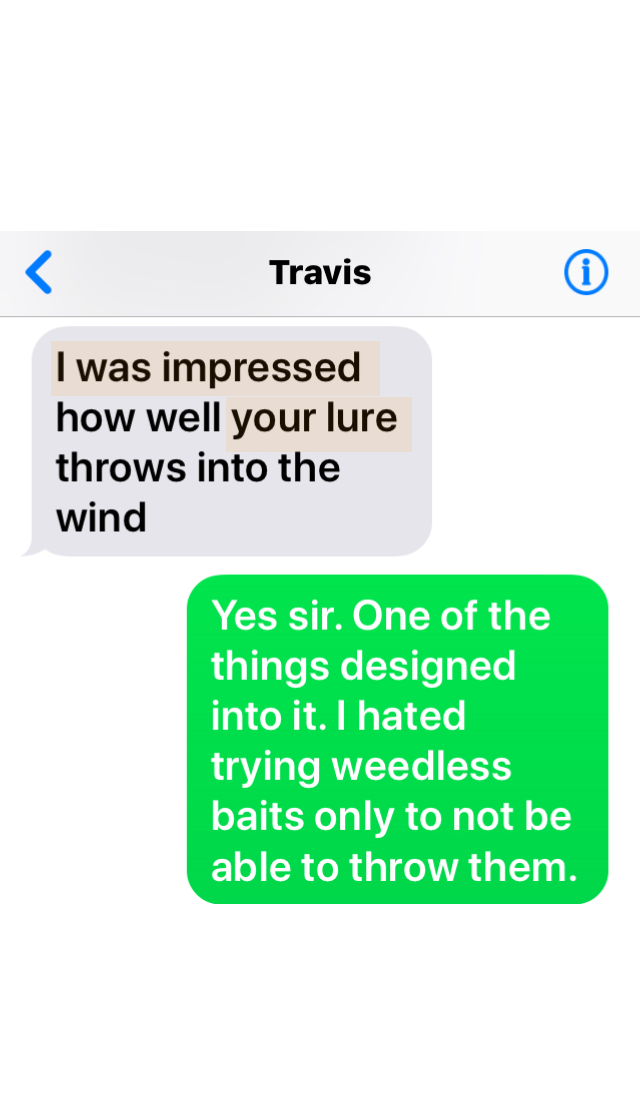
What Anglers Say About Our Grasswalker
Discover how the Grasswalker™ slips through seagrass, glides past oyster and rocks, and gets strikes where other lures can’t.
Our Happy Customers

Copyright 2025. Precision Fishing Resources LLC.
All Rights Reserved.
Products
Company
Support/Info
Subscribe to our Newsletter




